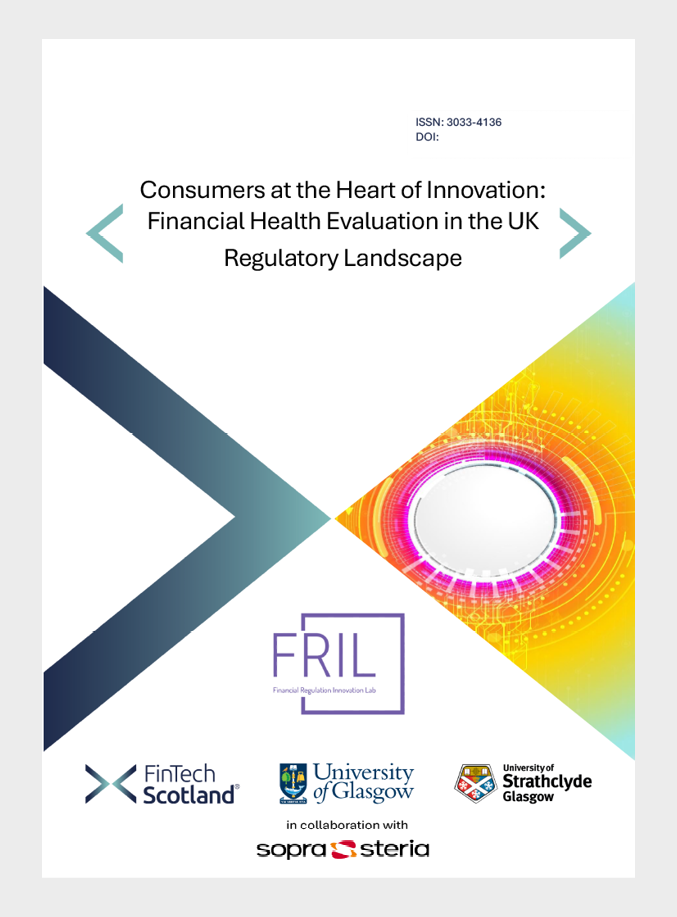With a firm focus on consumer wellbeing, the paper provides insights into how the sector can build a more resilient, inclusive and ethical future for financial services. Some of the key highlights include:
The rising tide of financial vulnerability
UK consumers are grappling with record levels of debt. Heading into 2025, the average household debt (excluding
mortgages) is over £17,000, with widespread reliance on credit cards, personal loans and overdrafts. Data from the FCA’s Financial Lives Survey paints a worrying picture: over 12.8 million adults feel overwhelmed or are in financial difficulty, and 1 in 4 adults lack financial resilience. New research from the latest FCA Financial Lives Survey shows that one in 10 UK adults have no savings at all, and findings suggest that 13 million people- a quarter of the UK adult population- have low
financial resilience.
The landscape is not just characterised by economic hardship, but also by the complexity and inaccessibility of traditional financial products. Vulnerable populations - including working-age families, renters, and those in regions like London and Northern Ireland - face disproportionate levels of financial stress. This signals
the need for systemic reform and innovative approaches to financial wellbeing.
A shift from creditworthiness to financial health
Traditional credit scoring models, which rely heavily on retrospective financial data, are increasingly inadequate for assessing consumers’ financial wellbeing. These scores often fail to capture early signs of financial distress or the broader
context of an individual’s financial situation. In contrast, the whitepaper advocates for a more holistic and forward-looking model of financial health evaluation.
This model includes a broader range of indicators such as income stability, expense behaviour, savings patterns, and even external data like regional deprivation indices. The aim is not just to assess lending risk but to understand consumers’
capacity to meet obligations, recover from shocks, and plan for long-term goals.
“The future of financial services must move beyond traditional creditworthiness and embrace a more inclusive understanding of financial health - one that reflects real-life pressures and vulnerabilities.” says co-author Kal Bukovski,
Consulting Senior Manager and Director of Academia & Research at Sopra Steria.
The regulatory response: From compliance to purpose
Regulation in the UK has been evolving to address these challenges. The FCA’s Consumer Duty introduces a purpose-driven framework, encouraging firms to focus on outcomes rather than simply ticking compliance boxes. It requires financial institutions to actively support consumer needs, especially in areas like affordability and vulnerability.
While regulatory initatives represent importnat progress, the whitepaper questions whether organisations are going beyond compliance to fully embrace the cultural and strategic shift required- treating financial wellbeing as not just an outcome, but
as a core driver of product design, data use and corporate strategy.
Technology as a catalyst: AI, predictive analytics and storytelling
At the heart of the transformation is technology - especially the use of AI and advanced analytics. These tools can detect early warning signs of financial distress, such as changes in spending behaviour, increased reliance on credit, or inconsistent
savings habits. Unlike backward-looking credit models, AI enables proactive, real-time intervention, helping institutions support customers before crises occur.
The paper presents case studies where machine learning models flag ‘at-risk’ customers, allowing institutions to offer solutions such as budgeting tools, debt restructuring or access to benefits programmes. These innovations extend not
just to banking but also to sectors like energy, where providers can pre-empt payment difficulties and support vulnerable households.
AI is also enabling new models of inclusion. Automated advisory tools (e.g., robo-advisors) are helping consumers with limited financial literacy or smaller portfolios to access affordable, personalised investment strategies. This shift toward “AI
for inclusion” represents a major opportunity for industry players to align commercial success with social impact.
Open Banking, Open Finance, and the data ethics imperative
The expansion from Open Banking to Open Finance offers another pivotal moment. Open Finance will allow data sharing across a wider range of financial products - insurance, pensions and investments - giving consumers a full-spectrum view of their finances.
This could lead to more personalised services, improved financial planning, and ultimately, greater control for consumers.
However, these innovations carry risks. The whitepaper stresses that data privacy, consent and digital ethics must be at the core of innovation. Misuse of financial data or AI models that aren’t clear could destroy trust and reinforce inequalities.
A robust regulatory framework aligned with GDPR,
as well as clear ethical standards, is essential to guide the responsible deployment of these technologies.
“Open Finance has the potential to shift power back to the consumer - giving people greater visibility and control over their financial data and outcomes. But that potential depends on digital inclusion and trust” says co-author of
the whitepaper, Kal Bukovski.
What’s next: A call for action and collaboration
The paper concludes with a forward-looking view. It anticipates a future shaped by hyper-personalised services, behavioural economics and embedded finance. From AI-powered assistants to integrated financial ecosystems, the sector is moving toward
services that are not only more efficient but also more intuitive and empathetic.
To make this vision a reality, the paper calls for:
greater collaboration between regulators, FinTechs, and traditional institutions.
widespread financial education to improve digital and financial literacy.
a shift in corporate mindsets to treat financial wellbeing as a long-term strategic goal, not just a compliance measure.
The UK, with its evolving regulatory landscape and vibrant fintech ecosystem, is well-positioned to lead this charge. But doing so requires keeping one principle at the forefront: putting consumers at the heart of innovation.
